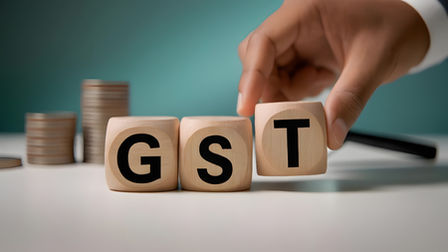
New Delhi — India’s automotive ecosystem is undergoing a major transformation driven by GST 2.0 reforms, revised customs duties, and the India–Japan Free Trade Agreement (CEPA), according to a new industry report released on Monday. The report notes that these policy shifts — supported by $43.3 billion in cumulative Japanese investment — are redefining the competitiveness and future roadmap of India’s $74-billion auto components sector.
The study, titled “Navigating Change: GST 2.0, Customs, and FTA Impacts on the India–Japan Auto Sector,” jointly published by Grant Thornton Bharat and the Indo-Japan Chamber of Commerce and Industry (IJCCI), highlights the sweeping changes triggered since the rollout of GST 2.0 in September. The revamped tax structure has streamlined the system, improved affordability, and boosted consumer demand across multiple vehicle categories.
Under GST 2.0:
Small cars and motorcycles under 350cc now attract 18% GST, reduced from 28% plus cess, cutting prices by up to ?1 lakh for certain models.
Premium vehicles, including SUVs and high-end bikes, are taxed at a flat 40% GST.
Electric vehicles continue to enjoy 5% GST, reinforcing the government’s push for clean mobility.
According to the report, the revised rates have led to a significant market response. Booking volumes in the small car segment surged by nearly 50%, and vehicle deliveries saw a sharp rise as affordability improved.
The Union Budget 2025 further strengthened the EV sector by balancing supply- and demand-side incentives. Customs duty exemptions on lithium-ion battery scrap and key minerals such as lead and copper are expected to secure critical raw materials and boost job creation. Additional exemptions on capital goods for battery manufacturing are also enhancing the EV supply chain.
India’s automotive industry — which contributes 7.1% to GDP and almost 50% of manufacturing GDP — produced 28 million vehicles in 2024, marking an 8% growth over the previous year. Exports crossed 4.5 million units, underscoring rising global competitiveness.
Commenting on the emerging landscape, Sohrab Bararia of Grant Thornton Bharat said:
“The convergence of GST 2.0 and targeted customs incentives marks a defining moment for India’s automotive sector. Reduced tax rates, simplified compliance, and supply-chain-focused exemptions will elevate India’s cost competitiveness and reinforce its role as a manufacturing and export hub for Japanese automakers.”
The report notes that tariff reductions on motorcycles and CKD/SKD units of larger vehicles support affordability and align with the government’s Atmanirbhar Bharat vision. These changes are expected to accelerate investment, boost EV adoption, and stimulate deeper Indo–Japan collaboration in clean mobility, advanced manufacturing, and next-generation technologies.
Beyond taxation and trade, the India–Japan CEPA and the India–Japan Digital Partnership (IJDP) are driving innovation in electric vehicles, connected vehicle technologies, and AI-enabled manufacturing. Meanwhile, initiatives such as the Supply Chain Resilience Initiative (SCRI) are promoting localisation of essential components and diversifying sourcing pathways.
Human resource development is also central to this transformation. Through the Japan-India Institute for Manufacturing (JIM) and Japanese Endowed Courses (JEC), more than 30,000 Indian engineers are being trained in Japanese manufacturing practices — creating a skilled workforce ready for advanced automotive production.
Together, the report concludes, these regulatory, trade, and capacity-building measures are setting the stage for the next wave of growth in India’s automotive sector and strengthening strategic ties with Japan.
With inputs from IANS